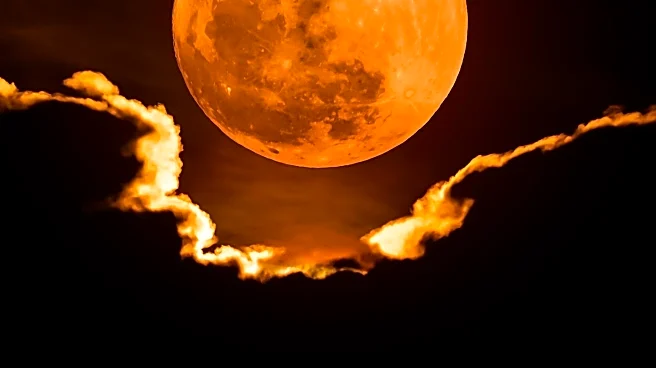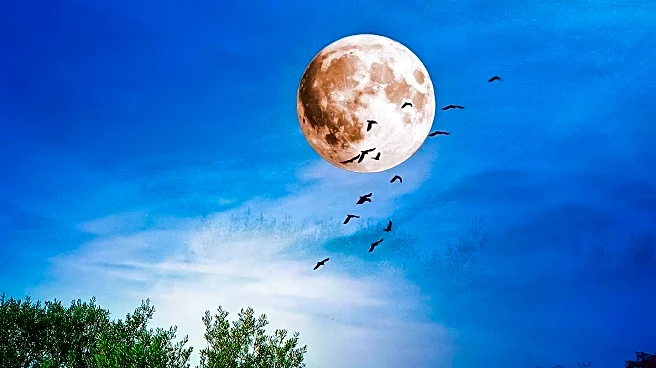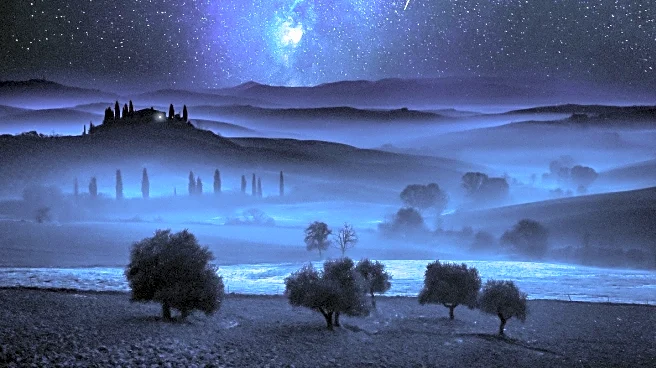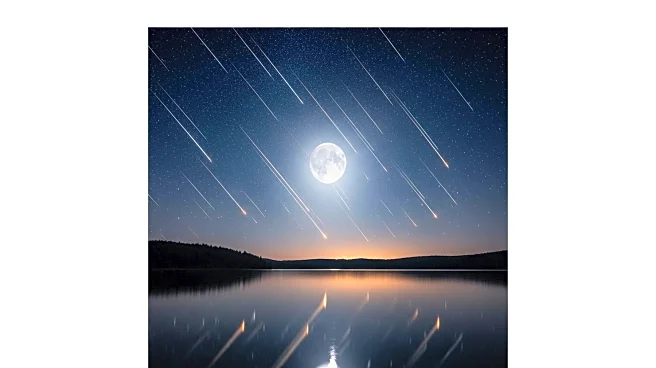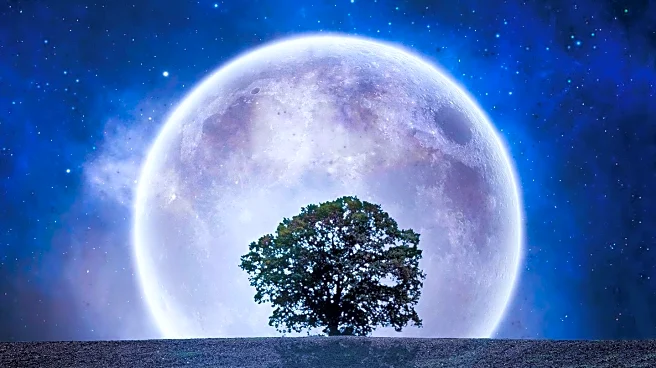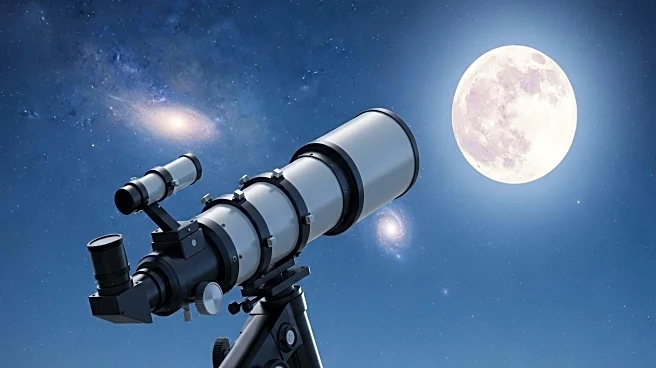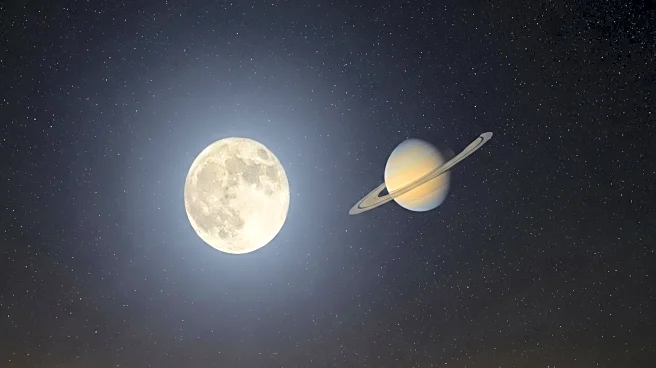What's Happening?
The Harvest Moon, the full moon closest to the autumnal equinox, appeared on October 6, 2025, marking the first supermoon of the year. This celestial event was visible in the Northern Hemisphere, where it appeared larger and brighter due to its proximity to Earth during its orbit. The Algonquins in the northeastern United States historically referred to it as the Corn Moon, as it coincided with the harvest of staple crops. According to John Gianforte, director of the University of New Hampshire Observatory, the moon's increased surface area during this time reflects more light, making it appear brighter. The supermoon phenomenon occurs when the moon is at or near its closest approach to Earth, known as perigee, during its elliptical orbit, making it appear up to 30% brighter and 14% larger than usual.
Why It's Important?
The Harvest Supermoon provides an opportunity for stargazers and photographers to capture stunning images of the night sky. This event highlights the natural beauty and scientific interest in lunar phenomena, drawing attention to the moon's impact on cultural traditions and scientific exploration. The increased brightness and size of the supermoon offer a unique viewing experience, encouraging public interest in astronomy and celestial events. Additionally, the Harvest Moon's historical significance as a time for agricultural harvest underscores the connection between natural cycles and human activities.
What's Next?
The October Harvest Supermoon is the first of three supermoons expected in 2025, with subsequent occurrences anticipated in November and December. These events will continue to offer opportunities for observation and photography, as the moon's proximity to Earth enhances its visibility and brightness. As interest in celestial phenomena grows, educational institutions and observatories may host events to engage the public in astronomy and science education. The continued occurrence of supermoons may also inspire further research into lunar cycles and their effects on Earth.
Beyond the Headlines
The Harvest Supermoon serves as a reminder of the cultural and historical significance of lunar events. It highlights the role of the moon in various traditions and its impact on human activities, such as agriculture. The event also underscores the importance of preserving dark skies for astronomical observation, as light pollution can hinder the visibility of celestial phenomena. Efforts to reduce light pollution and promote dark sky initiatives may gain momentum as public interest in astronomy increases.

